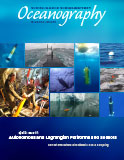Full Text
The scientific ocean drilling community lost one of its heroes on May 5, 2017, when Supervisor of Operations Support Mike Storms died from complications arising from myelodysplastic syndrome, having served the community for nearly 50 years. Although Mike’s name is only known to a handful of scientists, the hydraulic piston corer (HPC) that he conceived, designed, and developed—first deployed in 1979 aboard Glomar Challenger—revolutionized scientific ocean drilling and entire fields of geoscience. The HPC allowed recovery of soft sediments that were, for the first time, suitable for paleoceaongraphy. Piston coring was fast, so that multiple holes could be cored at a single site in a time-effective manner. By correlating multiple holes at a site to one another, scientists were able to create complete, composite ocean sedimentary sections. Mike later had a hand in developing the Variable Length Hydraulic Piston Corer (VLHPC) and Advanced Piston Corer (APC). Collectively, these three tools were the equivalent of putting corrective lenses on our blurred vision of Earth and ocean history. They instantly sharpened our ability to read the climate record, allowing us to understand past Earth and ocean processes at scales previously unimaginable.
It takes a special person to be able to work so well with the wide variety of people associated with the complex undertaking of scientific ocean drilling: engineers, scientists, drillers, technicians, review boards, and administrators, among others. Mike was that special person. And, it takes that special person to successfully bring major accomplishments across the finish line. Workbenches, engineering drawings, reports, concepts in people’s minds…all the world is littered with terrific ideas that never made it to implementation. Mike had the uncanny ability to see—and differentiate—between what would not work, what could not work, what should work, and what MUST be made to work. Thanks to his efforts, capabilities that were once unimaginable are now taken for granted. It is remarkable that it has now become routine to safely return to the deck of a rolling drilling vessel material gathered from kilometers below the rig floor, and to have that material preserve the thinnest layers, the tiniest microbiota, the most delicate cracks.
Mike obtained a BS in geological engineering from the University of Arizona and began work as a marine technician (an engineering aide) at the Deep Sea Drilling Project (DSDP) in 1970. He spent 14 years at DSDP in various roles in Engineering Development, ending as Assistant Supervisor of Development Engineering when that program concluded. He then moved to Texas A&M University in 1984 to join the next phase of scientific ocean drilling, called the Ocean Drilling Program (ODP), as Assistant Supervisor of Development Engineering. He served another 10 years in various engineering positions, including time as Assistant Manager of Engineering and Drilling Operations. In 1995, Mike moved from Engineering to Operations as an Operations Superintendent. In 2004, at the beginning of the Integrated Ocean Drilling Program phase, Mike became the Supervisor of Operations Support and continued to sail as an Operations Superintendent—most recently on Expedition 366, which ended in February 2017. Mike sailed on 48 scientific expeditions: nine DSDP legs, 26 ODP legs, nine Integrated Ocean Drilling Program expeditions, and four International Ocean Discovery Program expeditions.
It is difficult to imagine where scientific ocean drilling—and the field of paleoceanography in particular—would be without Mike’s engineering creativity and vision, and the operational insight and guidance he provided a generation of science parties. Mike, you will be missed greatly.
Contributed by Brad Clement, Mitch Malone, Peggy Delaney, Rick Murray, Larry Mayer, Peter deMenocal, and Ken Miller

